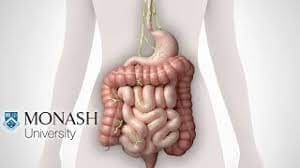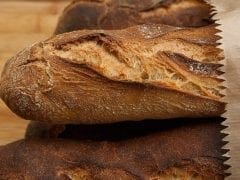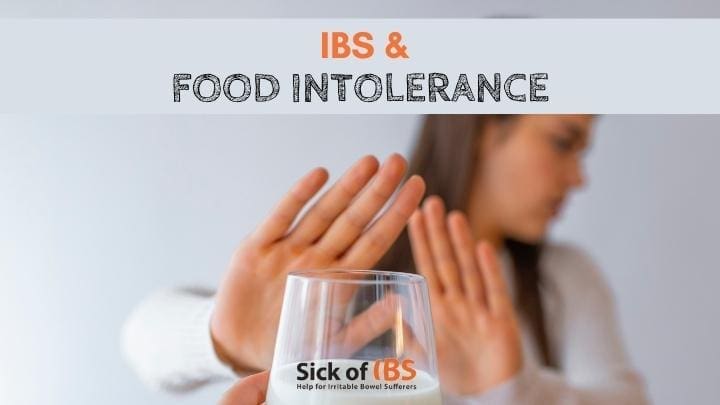
If you have IBS, food intolerance can be tricky to understand. Are low Fodmap foods easier to digest with IBS? What else should you look out for? Read on and find out.
Don’t miss my latest findings about Fodmaps and IBS at the end of this article. They might surprise you.
What you need to know first
You will often be reacting not to a food, but to a component of that food, even if it’s 100% natural.
I have never been able to eat apples, nor many other fruits for that matter. The culprit: food intolerance. At school when fruit was on the menu, I gave mine away rather than feel really sick. Later I realized that apples and other high-fructose fruit were major food triggers.
I am not a dietician or a doctor, but I am a former food product manager.
Moreover, I have beaten my IBS and no longer suffer from food intolerance. This is how I understand the subject based on research and personal experience:
IBS and food intolerance: Oh Sugar!
A large number of IBS sufferers have some sort of food intolerance, generally directly linked to the digestion of sugars present in food. You can read more about sugars here.
FODMAPS all contain sugars
If you have IBS, you have probably heard of FODMAPS, which are short chains of sugars that ferment in your gut.
FODMAP stands for:
Fermentable Oligo-Di-Monosaccharides And Polyols.
In order to find out how these are thought to ferment in your intestines and make you bloat, watch this video from Monash University in Australia, experts in FODMAP research:
Considering a Low FODMAP Diet for IBS
A Low FODMAP diet excludes all the foods containing these sugars and carbohydrates for a number of weeks, before slowly reintroducing them.
Therefore, this process aims at settling your digestive system.
Fodmaps hadn’t been invented when I was dealing with my IBS. However, the foods I reacted to are on the FODMAP list.
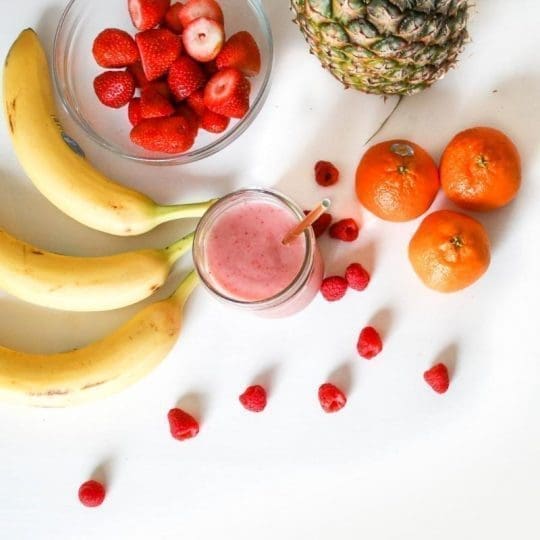
We are not supposed to stay on a low Fodmap diet for more than a couple of months before slowly adding in foods.
In reality, many IBS sufferers (like me) stay on a restricted diet for far too long because they find they are still sensitive to certain foods.
To see why, we need to look beyond FODMAPS and IBS, and take a closer look at the different sugars causing reactions. And even furhter than that…
IBS and food intolerance: What are you reacting to?
The major types of food intolerance most often associated with IBS are:
– dairy (intolerance to the sugar in cow’s milk, called lactose)
– fruit (intolerance to the sugar in fruit, called fructose)
– gluten (intolerance is thought to be caused by a protein, but similar symptoms can be caused by a chain of combined sugars called fructans).
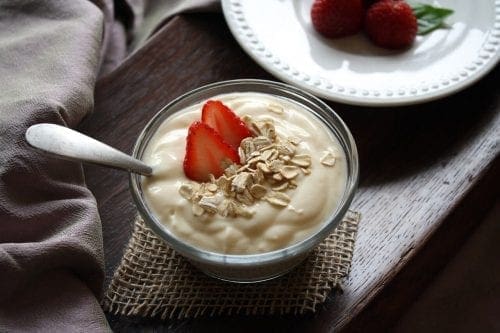
IBS and food intolerance: Beware of jumping to conclusions
As you can see, the term “dairy intolerance” is very wide. So you may not have a problem digesting all dairy products, just some containing high levels of lactose. Or maybe others with lower levels that you consume in high quantities, or with other food triggers.
It is easy to come to the conclusion that if you can’t eat yogurts, you are intolerant to lactose, or that if you have problems with wheat you are intolerant to gluten. While this may be the case, you may be barking up the wrong tree.
So this is what you need to check out:
Fructose versus fructan intolerance
Although they sound similar, they are very distinct and present in different types of foods.
Fructose is a simple sugar that is naturally present in some fruits, vegetables and honey. It can be made into high fructose corn syrup (HFCS) from corn, and is commonly found in a wide range of soft drinks and food sweeteners. The amount of fructose in a food or the serving size, or the combination with other foods is important. You can search the USDA National Nutrient Database.for the different fructose levels. The Family Wellness HQ blog presents the fructose levels in a very readable way, using data compiled from the same database.
Below is a very handy table, by Amy Fedewa and Satish S. C. Rao, that makes a lot of sense to me. You’ll notice that there are foods with wheat as a major ingredient that are high in fructose. This means that you may think you have a problem with gluten, but it may be fructose that is causing you problems.
Likewise, if you are having problems digesting yogurts, you may find that it’s not dairy (lactose) that is causing the problems, but the high fructose corn syrup (HFC) used to flavor them. Or maybe both.
Low fructose alternatives for IBS
If you are suffering from IBS and food intolerance, this handy list gives you some low fructose altrenative foods that you may find you tolerate better:
| CATEGORY | HIGH FRUCTOSE FOODS | LOW FRUCTOSE ALTERNATIVES |
|---|---|---|
| Fruits | Fresh fruit including apples, pears, mango, watermelon, nectarines, peaches, plums, especially juices, dried fruits (such as prunes, raisins or dates) and fruits canned in juice or syrup. | Avocado, cranberries, lime, lemon cantaloupe, pineapple, strawberries, mandarin orange, bananas. |
| Vegetables | Artichoke, asparagus, broccoli, chutney, leeks, mushrooms, okra, onions, peas, red pepper, shallots, tomato paste, tomato products (canned tomatoes, ketchup). | Bamboo shoots, beets, bok choy, carrots, celery, chives, green pepper, kale, parsnip, plum tomato, radish, rhubarb, spinach, sweet potato, turnip greens, white potato, winter squash. Allowed vegetables that are more likely to give you gas include: Brussels sprouts, cabbage, cauliflower, lettuce. |
| Grains and Cereals | Foods with wheat as a major ingredient (wheat bread, pasta, couscous), grains with added dried fruit, grains with added HFCS (high fructose corn syrup) | Buckwheat flour, corn chips, cornmeal, corn tortillas, gluten free breads, crackers and pastas without added HFCS, grits, oatmeal, popcorn without HFCS, quinoa, rice, rye breads without added HFCS, soba noodles and all other flours made from allowed grains. |
| Meats | Marinated or processed meats containing restricted ingredients. | Plain unprocessed meats of any type (beef, chicken, fish, eggs etc.) Legumes, tofu (note that these tend to be more gas forming and may need to be avoided), nut butters that do not contain HFCS. |
| Dairy Products | Milk, cheese, yogurt, soy milk, rice milk, almond milk without added HFCS. | Any product with HFCS. Be especially careful with yogurts, and flavored milks. |
Gluten Intolerance: What about Fructans?
As previously mentioned, gluten intolerance is thought to be caused by a protein, but similar symptoms can be caused by a chain of combined sugars called fructans.
Fructans = fructose + glucose
Fructans are oligo- or polysaccharides that include short chains of fructose molecules with an end glucose molecule. They are present in the following foods:
Wheat including bread, pasta, couscou, onions, shallots, scallions, garlic, barley, Brussels sprouts, cabbage, broccoli, pistachio, artichoke, inulin or chicory root (see table below).
This second table (below) is particularly useful. It shows the products linked to a particular type of sugar or sugar chain. If you find you react to one food, look at the food family for that sugar. Do you react to the others?
Lactose intolerance: Watch out for Galactans too
Galactans are polysaccharides that include galactose.
Galactose + glucose = lactose
So if you are replacing cow’s milk with soy milk and still reacting, this could be why.
What about Polyols?
Polyols are sugar alcohols that are used in processed foods to sweeten them, make them creamy, or give them a longer shelf-life.
Surprisingly, polyols are also naturally present in some fresh fruit (see table below).
You may well find polyols in processed bread.
| Foods containing | High FODMAP | Alternatives | Low FODMAP |
|---|---|---|---|
| Fructans | Wheat including bread, pasta, couscous etc., onions, shallots, scallions, garlic, barley, Brussels sprouts, cabbage, broccoli, pistachio, artichoke, inulin or chickory root | Fruits | Oranges, unsweetened cranberries, strawberries, cantaloupe, lemon, lime |
| Galactans | Include soy milk, soy protein isolate, miso, veggie-burgers, dried beans and peas, lentils, butter/lima beans, humus, large amount (more than 1 cup per day) of coffee | Vegetables | Peas, celery, carrots, plum tomato, spinach, lettuce, green peppers, green beans, bean sprouts, turnip, turnip green, cucumber |
| Lactose | Soft cheeses including ricotta, cottage and cream cheese, milk, cream, yoghurt, butter, ice-cream | Dairy | Hard cheeses including cheddar, Swiss and parmesan. Lactose-free unsweetened yoghurt, lactose-free milk |
| Polyols | Artificial sweeteners (xylitol, sorbitol etc.), apples, plums, cherries, pear, cauliflower, sweet corn, snow peas, mushrooms | Meats | All plain unprocessed meats, peanut butter (not sweetened with high fructose corn syrup), eggs, small amounts of almonds and walnuts, tofu |
| Grains | Rice (all varieties), gluten and rye-free bread, oats, corn, oat rice, buckwheat or quinoa cereals, corn tortilla, grits, popcorn, potato, quinoa |
A surpising new take on IBS, Fodmaps and food intolerance

Surprisingly, after a lifetime of IBS and being careful what I ate, I actually got rid of food intolerance. Without any low Fodmap diets, special foods. or any products of any kind.
What I discovered was that there was much more to IBS and food intolerance than the food itself.
Surprisingly, food intolerance had little to do with the food I was eating.
Instead it had a direct link with my IBS triggers and how I was feeling.
11
